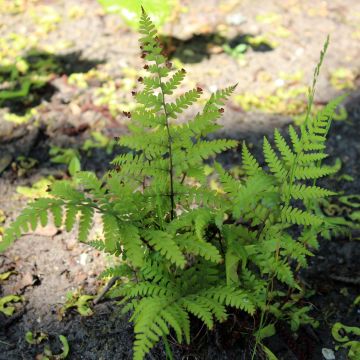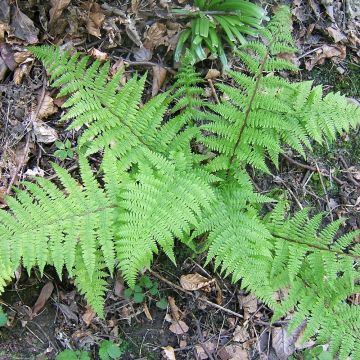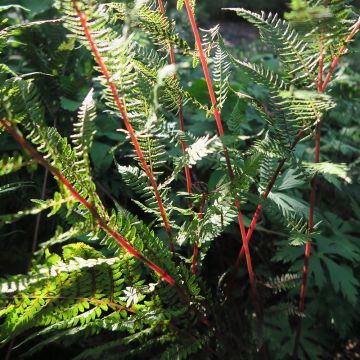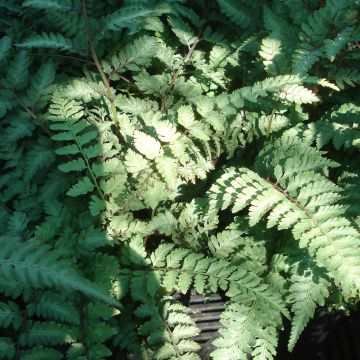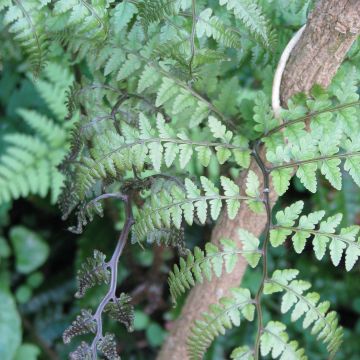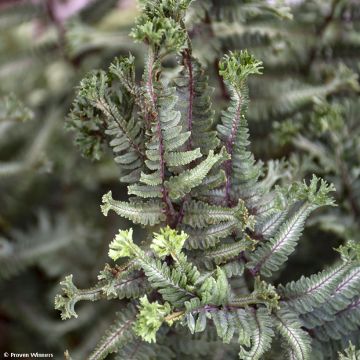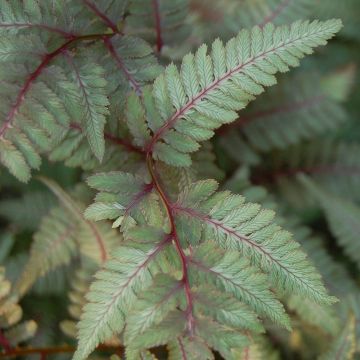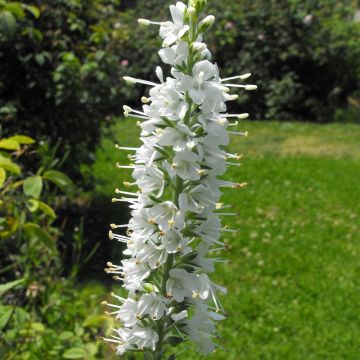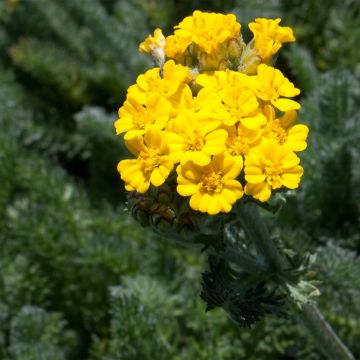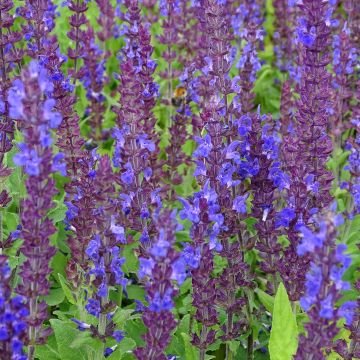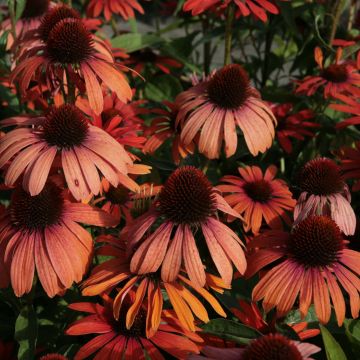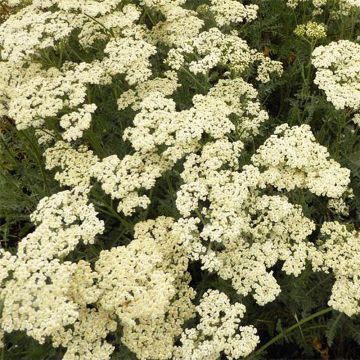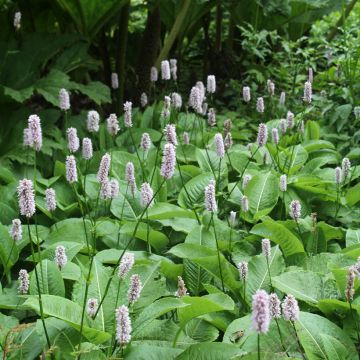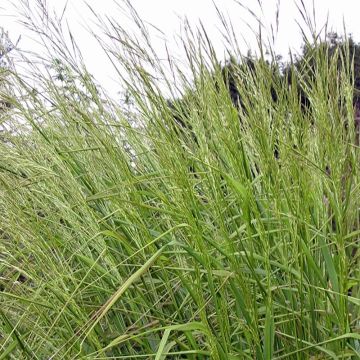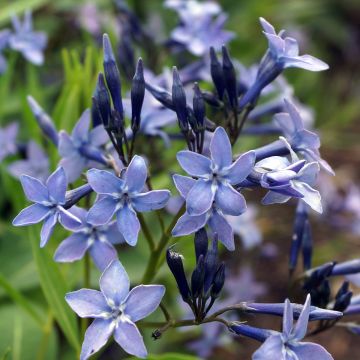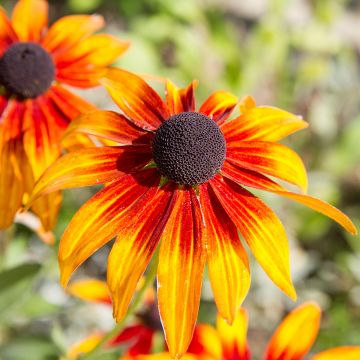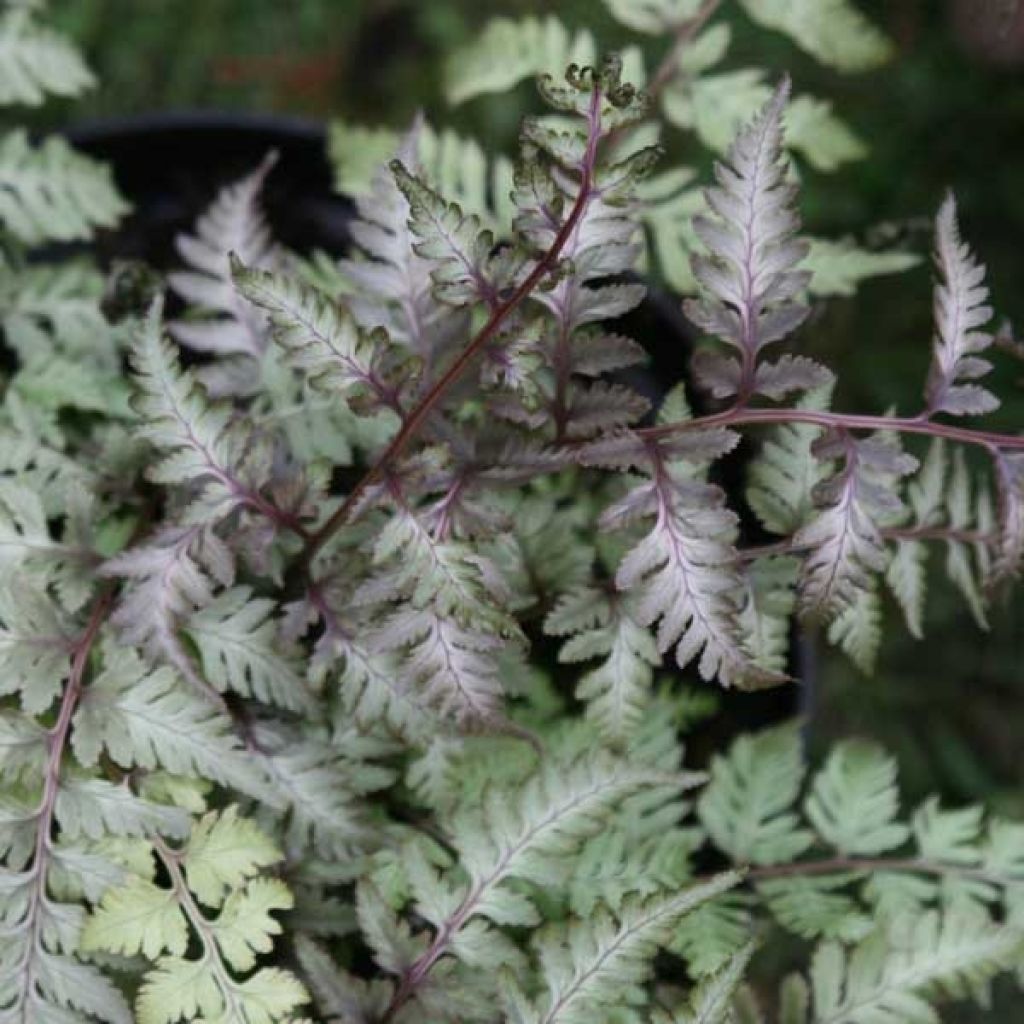

Athyrium niponicum var. pictum - Painted Fern
Athyrium niponicum var. pictum - Painted Fern
Athyrium niponicum var. pictum
Japanese Painted Fern
This item cannot be shipped to the selected country
Delivery charge from €5.90
Delivery charge from €5.90
Delivery to Corse prohibited
More information
Schedule delivery date,
and select date in basket
This plant carries a 12 months recovery warranty
More information
We guarantee the quality of our plants for a full growing cycle, and will replace at our expense any plant that fails to recover under normal climatic and planting conditions.
From €5.90 for pickup delivery and €6.90 for home delivery
Express home delivery from €8.90.
From €5.90 for pickup delivery and €6.90 for home delivery
Express home delivery from €8.90.
Delivery to Corse prohibited: UE law prohibits the import of this plant from mainland France to Corse as part of the fight against Xylella fastidiosa. Please accept our sincere apologies.
More information

Does this plant fit my garden?
Set up your Plantfit profile →
Description
Athyrium niponicum var. pictum is a small exquisitely variegated painted fern. Its beautifully variegated fronds are adorned with blue and silver metallic hues, highlighted with purple-red along the midrib. The young, particularly silvery, leaves are stunning in slightly shaded areas of the garden. Over time, this plant can colonise permanently wet area if the conditions are right. It thrives around natural ponds, in moist rockeries, or in damp woodlands.
The Japanese Painted Fern, in Latin Athyrium niponicum var. pictum, belongs to the family Athyriaceae (Dryopteridaceae). This botanical species is native to Japan, Taiwan, Korea, and northern China. Generally slow-growing in the garden, this fern will spread in a compact tuft, reaching 20-30 cm (8-12in) in height with a spread of 30 cm (12in). Once established, it becomes quite robust. It is a deciduous fern (it loses its foliage in winter).
Athyrium niponicum pictum forms a tuft with a branching and spreading habit from a central point. The young fronds appear silver with metallic hues. The mature fronds, 25 to 30 cm (10 to 12in) long, are bipinnate, pendulous, triangular, and dentate. The rachis (central vein) and stems have a purple hue that slightly extends onto the pale green fronds, marked with silver zones. This fern has a trailing, scale-like, reddish-brown rootstock that allows it to colonise over time without becoming invasive. It is highly resistant to cold when its rootstock is protected by a layer of dead leaves or dried fronds.
Plant Athyrium niponicum Pictum where the soil is rich, moist to fresh, neutral to slightly acidic, but well-drained. Above all, it is a plant for dappled light and moist soil or partial shade, expressing its full potential in very fresh woodlands or around water features. It also thrives in rockeries with rich soil and partial shade, where it can reach impressive dimensions over time. It pairs beautifully with Corydalis, hostas, baneberries, Solomon's seals, lily of the valley, brunneras, and trilliums. It adapts well to cultivation in large pots, in shade, with regular fertiliser.
Report an error about the product description
Athyrium niponicum var. pictum - Painted Fern in pictures
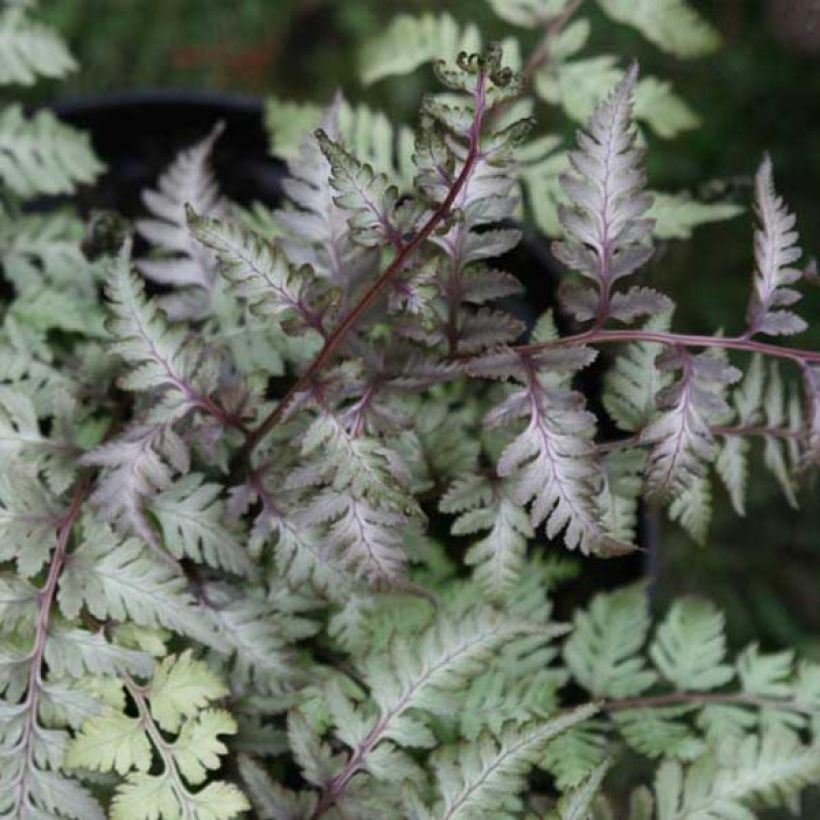

Foliage
Plant habit
Botanical data
Athyrium
niponicum
var. pictum
Athyriaceae
Japanese Painted Fern
East Asia
Other Athyrium
Planting and care
Place Athyrium niponicum var. pictum in shaded or partially shaded areas, sheltered from cold winds. However, the denser the shade, the slower its growth. Plant the fern in a soil rich in organic matter, that is moist to wet but well-drained as it does not appreciate excess moisture. Athyrium requires a soil without limestone, and soil enriched with leaf compost or garden compost is appreciated. It can tolerate fairly dry soil. Add mulch in autumn.
Planting period
Intended location
Care
-
, onOrder confirmed
Reply from on Promesse de fleurs
Summer flowering perennials
Haven't found what you were looking for?
Hardiness is the lowest winter temperature a plant can endure without suffering serious damage or even dying. However, hardiness is affected by location (a sheltered area, such as a patio), protection (winter cover) and soil type (hardiness is improved by well-drained soil).

Photo Sharing Terms & Conditions
In order to encourage gardeners to interact and share their experiences, Promesse de fleurs offers various media enabling content to be uploaded onto its Site - in particular via the ‘Photo sharing’ module.
The User agrees to refrain from:
- Posting any content that is illegal, prejudicial, insulting, racist, inciteful to hatred, revisionist, contrary to public decency, that infringes on privacy or on the privacy rights of third parties, in particular the publicity rights of persons and goods, intellectual property rights, or the right to privacy.
- Submitting content on behalf of a third party;
- Impersonate the identity of a third party and/or publish any personal information about a third party;
In general, the User undertakes to refrain from any unethical behaviour.
All Content (in particular text, comments, files, images, photos, videos, creative works, etc.), which may be subject to property or intellectual property rights, image or other private rights, shall remain the property of the User, subject to the limited rights granted by the terms of the licence granted by Promesse de fleurs as stated below. Users are at liberty to publish or not to publish such Content on the Site, notably via the ‘Photo Sharing’ facility, and accept that this Content shall be made public and freely accessible, notably on the Internet.
Users further acknowledge, undertake to have ,and guarantee that they hold all necessary rights and permissions to publish such material on the Site, in particular with regard to the legislation in force pertaining to any privacy, property, intellectual property, image, or contractual rights, or rights of any other nature. By publishing such Content on the Site, Users acknowledge accepting full liability as publishers of the Content within the meaning of the law, and grant Promesse de fleurs, free of charge, an inclusive, worldwide licence for the said Content for the entire duration of its publication, including all reproduction, representation, up/downloading, displaying, performing, transmission, and storage rights.
Users also grant permission for their name to be linked to the Content and accept that this link may not always be made available.
By engaging in posting material, Users consent to their Content becoming automatically accessible on the Internet, in particular on other sites and/or blogs and/or web pages of the Promesse de fleurs site, including in particular social pages and the Promesse de fleurs catalogue.
Users may secure the removal of entrusted content free of charge by issuing a simple request via our contact form.
The flowering period indicated on our website applies to countries and regions located in USDA zone 8 (France, the United Kingdom, Ireland, the Netherlands, etc.)
It will vary according to where you live:
- In zones 9 to 10 (Italy, Spain, Greece, etc.), flowering will occur about 2 to 4 weeks earlier.
- In zones 6 to 7 (Germany, Poland, Slovenia, and lower mountainous regions), flowering will be delayed by 2 to 3 weeks.
- In zone 5 (Central Europe, Scandinavia), blooming will be delayed by 3 to 5 weeks.
In temperate climates, pruning of spring-flowering shrubs (forsythia, spireas, etc.) should be done just after flowering.
Pruning of summer-flowering shrubs (Indian Lilac, Perovskia, etc.) can be done in winter or spring.
In cold regions as well as with frost-sensitive plants, avoid pruning too early when severe frosts may still occur.
The planting period indicated on our website applies to countries and regions located in USDA zone 8 (France, United Kingdom, Ireland, Netherlands).
It will vary according to where you live:
- In Mediterranean zones (Marseille, Madrid, Milan, etc.), autumn and winter are the best planting periods.
- In continental zones (Strasbourg, Munich, Vienna, etc.), delay planting by 2 to 3 weeks in spring and bring it forward by 2 to 4 weeks in autumn.
- In mountainous regions (the Alps, Pyrenees, Carpathians, etc.), it is best to plant in late spring (May-June) or late summer (August-September).
The harvesting period indicated on our website applies to countries and regions in USDA zone 8 (France, England, Ireland, the Netherlands).
In colder areas (Scandinavia, Poland, Austria...) fruit and vegetable harvests are likely to be delayed by 3-4 weeks.
In warmer areas (Italy, Spain, Greece, etc.), harvesting will probably take place earlier, depending on weather conditions.
The sowing periods indicated on our website apply to countries and regions within USDA Zone 8 (France, UK, Ireland, Netherlands).
In colder areas (Scandinavia, Poland, Austria...), delay any outdoor sowing by 3-4 weeks, or sow under glass.
In warmer climes (Italy, Spain, Greece, etc.), bring outdoor sowing forward by a few weeks.

































